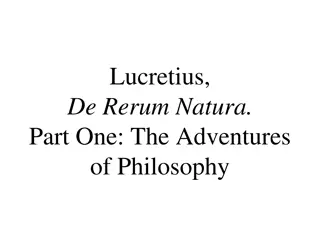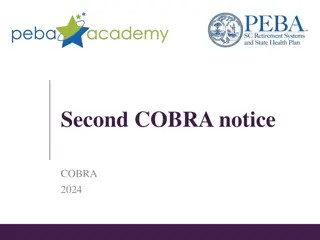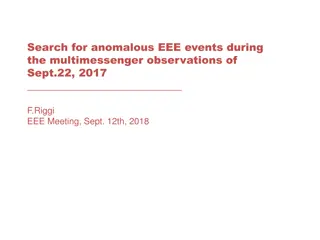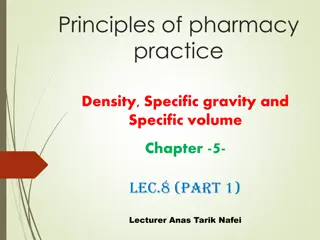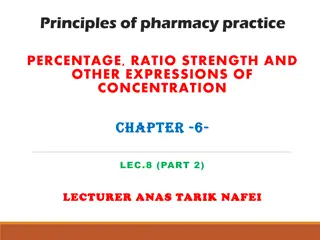
Key Events Chronicled in 'Rerum Per Octennium
Explore the pivotal moments chronicled in 'Rerum Per Octennium,' revealing the era's defining events.n
Download Presentation

Please find below an Image/Link to download the presentation.
The content on the website is provided AS IS for your information and personal use only. It may not be sold, licensed, or shared on other websites without obtaining consent from the author. Download presentation by click this link. If you encounter any issues during the download, it is possible that the publisher has removed the file from their server.
E N D
Presentation Transcript
Key Octennium Events Chronicled in 'Rerum Per In the annals of colonial history, few stories are as captivating and complex as the Dutch occupation of Brazil in the 17th century. At the heart of this fascinating tale lies a monumental work - the Barlaeus Rerum Per Octennium. Penned by the renowned Dutch humanist Caspar Barlaeus, this chronicle serves as our window into a pivotal period that shaped the destinies of two nations across the Atlantic. As we delve into the pages of this remarkable text, we're transported to a world of ambitious conquests, cultural exchanges, and political intrigue. It isn't just a dry historical account; it's a vivid tapestry that brings to life the triumphs, struggles, and lasting impact of Dutch Brazil. Why does this matter today? Because, this often-overlooked chapter in history offers invaluable insights into the complexities of colonial rule, the clash of cultures, and the far-reaching consequences of European ambitions in the New World.
Key Events in Barlaeus Rerum Per Octennium 1. The Genesis of Dutch Brazil The story of Dutch Brazil begins with the ambitions of the Dutch West India Company (WIC) and their quest for economic dominance in the New World. In 1624, a fleet of Dutch ships set sail for the Brazilian coast, marking the beginning of a tumultuous period that would reshape the region's political and cultural landscape. Key events chronicled in the Barlaeus Rerum Per Octennium: 1624: The Dutch capture Salvador, the capital of Portuguese Brazil 1625: Portuguese forces recapture Salvador 1630: The Dutch successfully invade Pernambuco, establishing a foothold in northeastern Brazil Dutch Expeditions to Brazil (1624-1630) Year Event Outcome 1624 Capture of Salvador Initial Dutch success 1625 Portuguese counterattack Dutch Salvador expelled from 1630 Invasion of Pernambuco Establishment Brazil of Dutch Read More Article: The Commissioning of Adrien de Montigny: Patronage and Artistic Freedom 2. The Golden Age of Dutch Brazil under Johan Maurits One of the most captivating chapters in the Rerum Per Octennium is the account of Johan Maurits van Nassau-Siegen's governorship. Appointed by the WIC in 1636, Maurits brought a unique blend of administrative skill and cultural sophistication to Dutch Brazil. Highlights of Maurits' reign (1637-1644): Expansion of Dutch territory Establishment of Mauritsstad (modern-day Recife) as the capital
Promotion of religious tolerance and scientific exploration Patronage of artists and scholars, including Frans Post and Georg Marcgraf 3. Economic Endeavors and Sugar Production The Barlaeus Rerum Per Octennium provides valuable insights into the economic foundations of Dutch Brazil, particularly the sugar industry that fueled its prosperity. Key economic developments: Modernization of sugar mills Introduction of new agricultural techniques Expansion of trade networks Conflicts with Portuguese plantation owners Sugar Production in Dutch Brazil (1630-1654) Period Annual Production (tons) Sugar Primary Destinations Export 1630-1635 15,000 - 20,000 Netherlands, Europe Northern 1636-1645 24,000 - 30,000 Netherlands, Mediterranean 1646-1654 18,000 - 22,000 Netherlands, England 4. Scientific and Cultural Exchanges One of the most enduring legacies of Dutch Brazil, as chronicled in the Rerum Per Octennium, is the flourishing of scientific and cultural pursuits during this period. Notable achievements: Georg Marcgraf's pioneering studies in natural history Willem Piso's medical research and documentation of native remedies Frans Post's landscape paintings capture the Brazilian scenery Albert Eckhout's portraits of Indigenous peoples and still-life compositions
5. Religious Policies and Social Dynamics The masterpiece offers valuable insights into the complex religious and social landscape of Dutch Brazil. Unlike the Portuguese colonial model, the Dutch administration adopted a more tolerant approach to religious diversity. Key aspects of Dutch religious policy: Limited religious freedom for Catholics and Jews Attempts to convert Indigenous populations to Protestantism Tensions between different religious groups Religious Demographics in Dutch Brazil (Estimated, 1645) Religious Group Percentage of Population Catholics 60% Protestants 25% Jews 5% Indigenous religions 10% 6. Military Conflicts and the Fall of Dutch Brazil The Rerum Per Octennium provides a detailed account of the military struggles that ultimately led to the end of Dutch rule in Brazil. Significant military events: 1645: Beginning of the Pernambuco Insurrection 1648-1649: Battles of Guararapes 1654: Surrender of Recife to Portuguese forces Read More Article: The Role of Adrien de Montigny in the Valois Court 7. Legacy and Historical Significance As we reflect on the key events, it becomes clear that the Dutch period in Brazil, though relatively short-lived, left an indelible mark on both nations' histories.
Lasting impacts: Architectural influences in northeastern Brazil Scientific knowledge and artistic representations of Brazilian flora, fauna, and people Early experiments in religious tolerance and multicultural governance Strengthened Portuguese determination to maintain control over Brazil 8. Artistic and Scientific Legacy of Dutch Brazil It not only chronicles political and economic events but also captures the rich artistic and scientific contributions of the Dutch period in Brazil. This cultural flowering left an enduring legacy that continues to fascinate scholars and art enthusiasts today. Key artistic and scientific contributions: The establishment of the first astronomical observatory in the Southern Hemisphere Creation of detailed maps and charts of the Brazilian coastline Documentation of over 100 species of animals and plants previously unknown to European science Development of new surgical techniques and medical treatments inspired by Indigenous practices From Pages to Perspective This highlighting the Dutch administration's commitment to knowledge and cultural exploration. From the initial conquest to the cultural flowering under Johan Maurits and the eventual fall of Dutch control, this chronicle paints a vivid picture of a unique historical moment. These paintings and sketches offer insights into the landscape, flora, fauna, and people of the region, serving as both artistic masterpieces and historical records. book meticulously documents multiple scientific and artistic endeavors, For those eager to delve deeper into this captivating period or explore other significant historical texts, Arader Books is your gateway to the past. Our extensive collection of rare and scholarly works, including facsimiles and translations of the Rerum Per Octennium, can help you uncover the rich tapestry of global history. Site Article: Key Events Chronicled in 'Rerum Per Octennium

